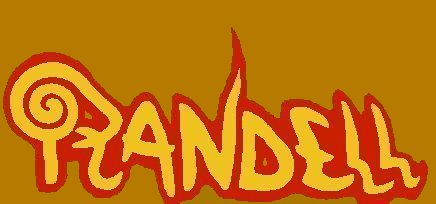
self reflecting ©

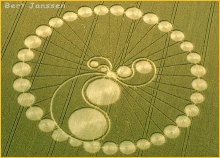
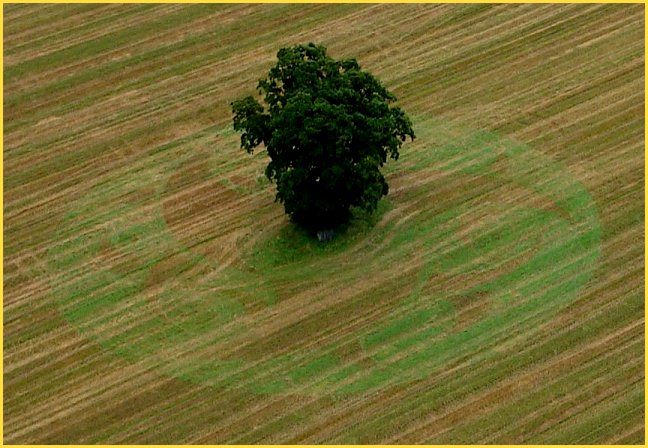
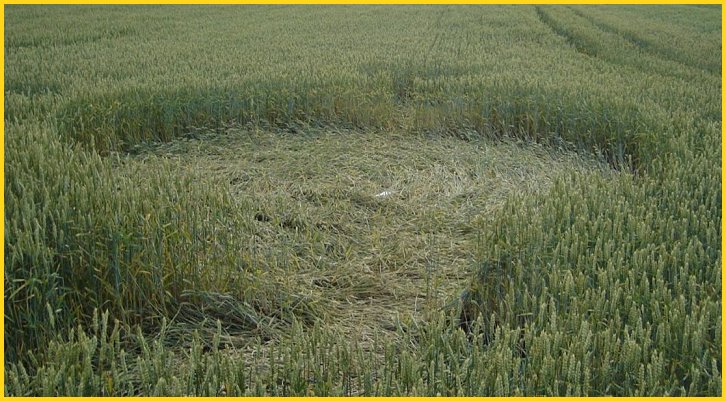
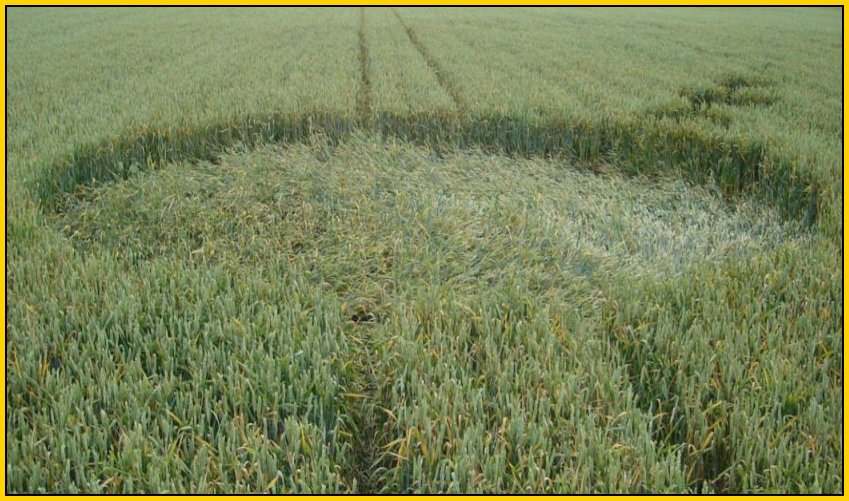
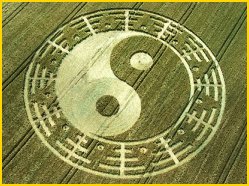
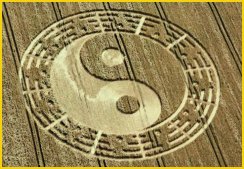
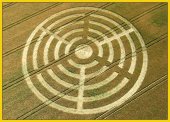
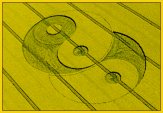
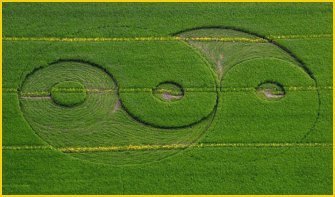
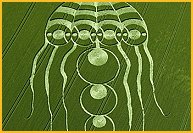
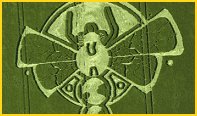
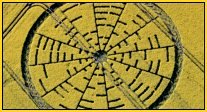
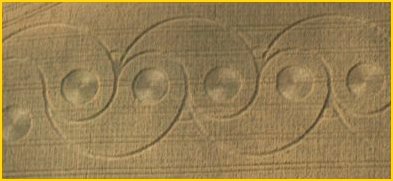
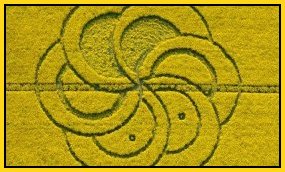
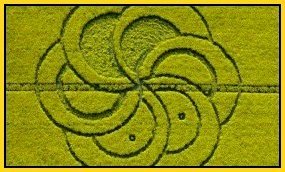
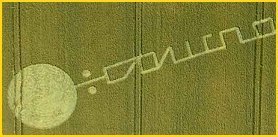
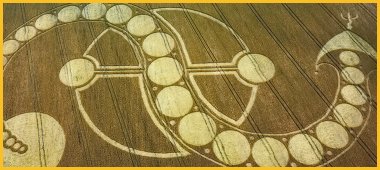
|
CROPCIRCLE RESEARCH
Wilton Windmill, may 22 2010
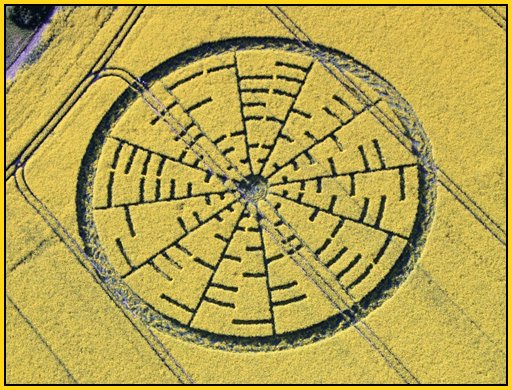
The Wilton Windmill formation. © photo: Lucy Pringle
Finding a keybunch!
I would think that again our ancient roots are of high importance here. After the other three formations
at the ancient sites it seems that ancestral culture might be the cropcircle-theme for 2010.
At first sight this new formation seems to me to contain the old Ogham writing. But as we will find out,
that's only at first sight. Nevertheless, the formation connects with the earlier Yarnbury formation(s)
so that the idea of refering to our ancestral culture remains.
I show two examples of the Ogham alphabet now:
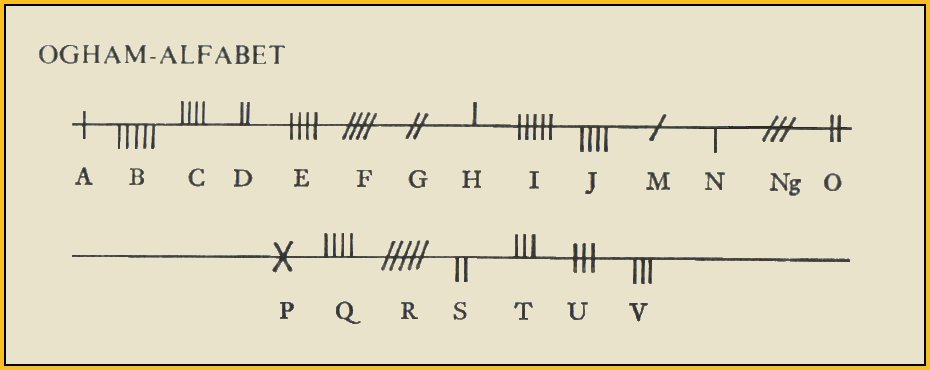
Ogham-script.
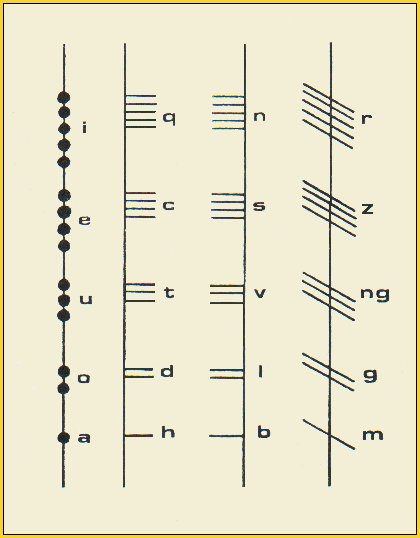
Ogham-script.
Concidering the fact that these two alfabeths vary, I wonder how truthfull they realy are. But nevertheless
I try to project the Ogham writing onto the Wilton pictogram.
Doing so I realise the following:
• Only 8 letters of 20 or 21 are used, turning out to be a selection of letters that are made of half
vertical lines. No whole lines, no diagonal lines and no dots. Is this not a touch too selective?
• Also, starting from the center, we discover that each of the 12 radials share the same (small)
beginning crossline.
• Looking at each radial, we notice the one half complements the other half. This happens at all 12 radials.
Take these three facts together and I would say it becomes a little unlikely that we are facing an Ogham
script. In spite of that I will show the scheme that is a result of the projection.
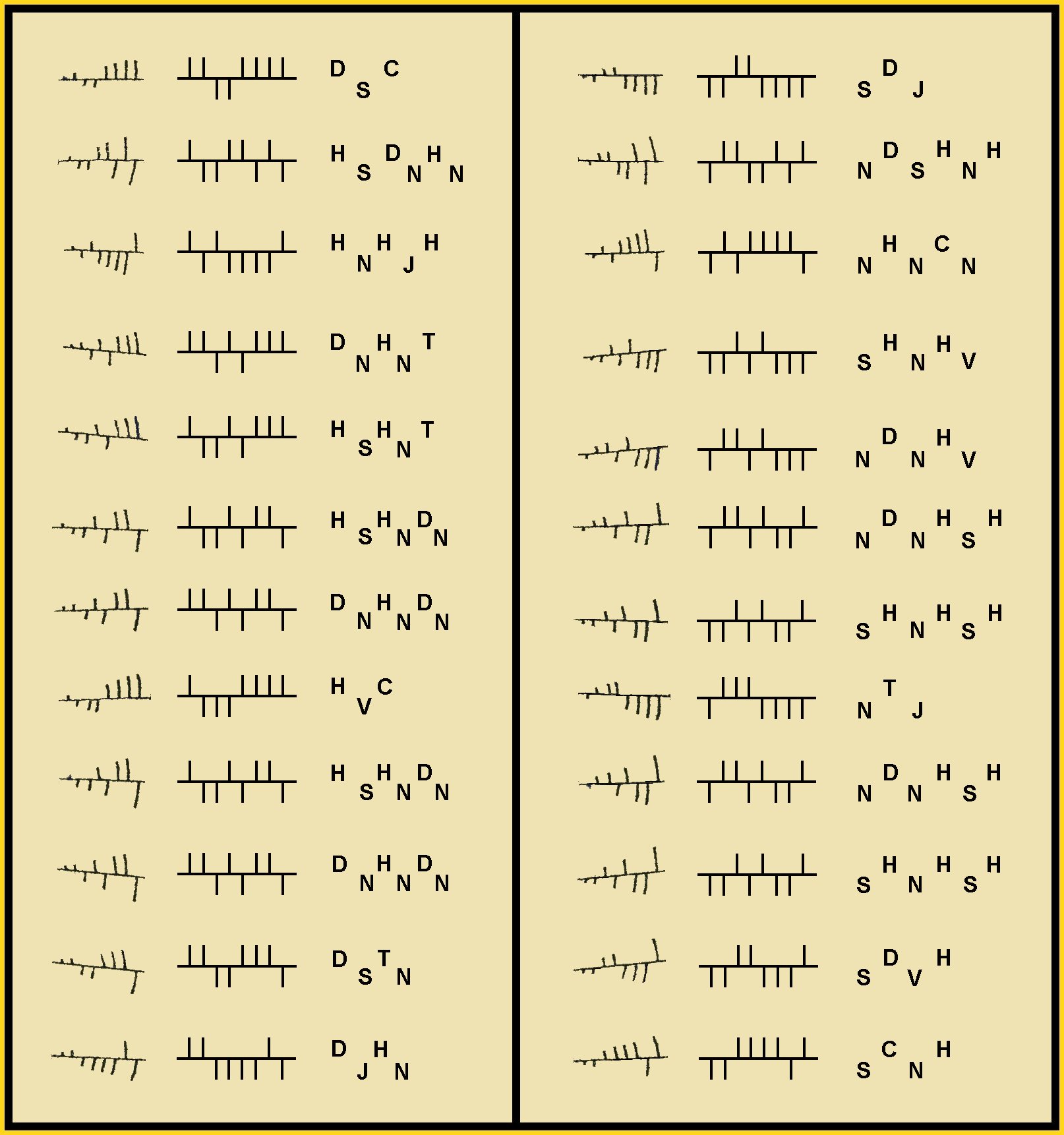
Scheme.
The letter 'S' in this scheme can be replaced for letter 'L', while 'N' could be a 'B', when using the other
alphabet. Also 'J' becomes 'S' doing so. Noticing the scheme as such, it reminds me to combinations in
genetics but I supose it doesn't fully match. In case there is a genetical engineer around, please tell me.
Although we seem to come to a dead end with the Ogham association, making this scheme helped me to
understand a lot. The complementairy aspect of both sides of the radials gave me a direct sense of
finding keys! As if 12 keys are apparent that can be turned in order to fit. Now it becomes obvious
that the Yarnbury Castle formation(s) links definitly to this formation. After all, we see that
intriguďng keyhole with all its dots and synchronistic(!) lines. Also, there is that simple formation
that looks like the base of the Wilton Windmill formation… This little base formation blows my mind
right now for reasons I will explain later.
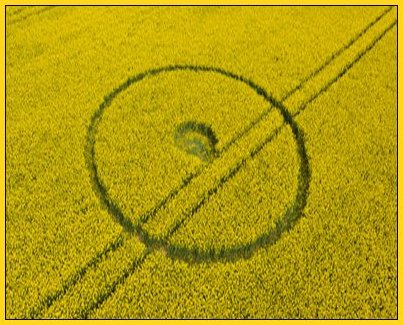
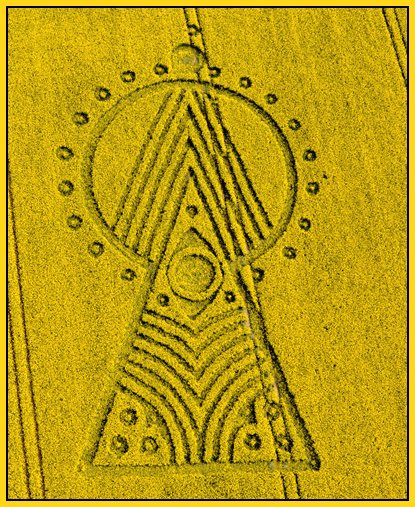

Left; © photo: Steve Alexander
Middle; © photo: Steve Alexander
Right; © photo: Lucy Pringle
Another thing that the scheme helped me to find out is pretty uplifting I must say. Although it could
also be recognised without the scheme, I will show you the way I came to it.
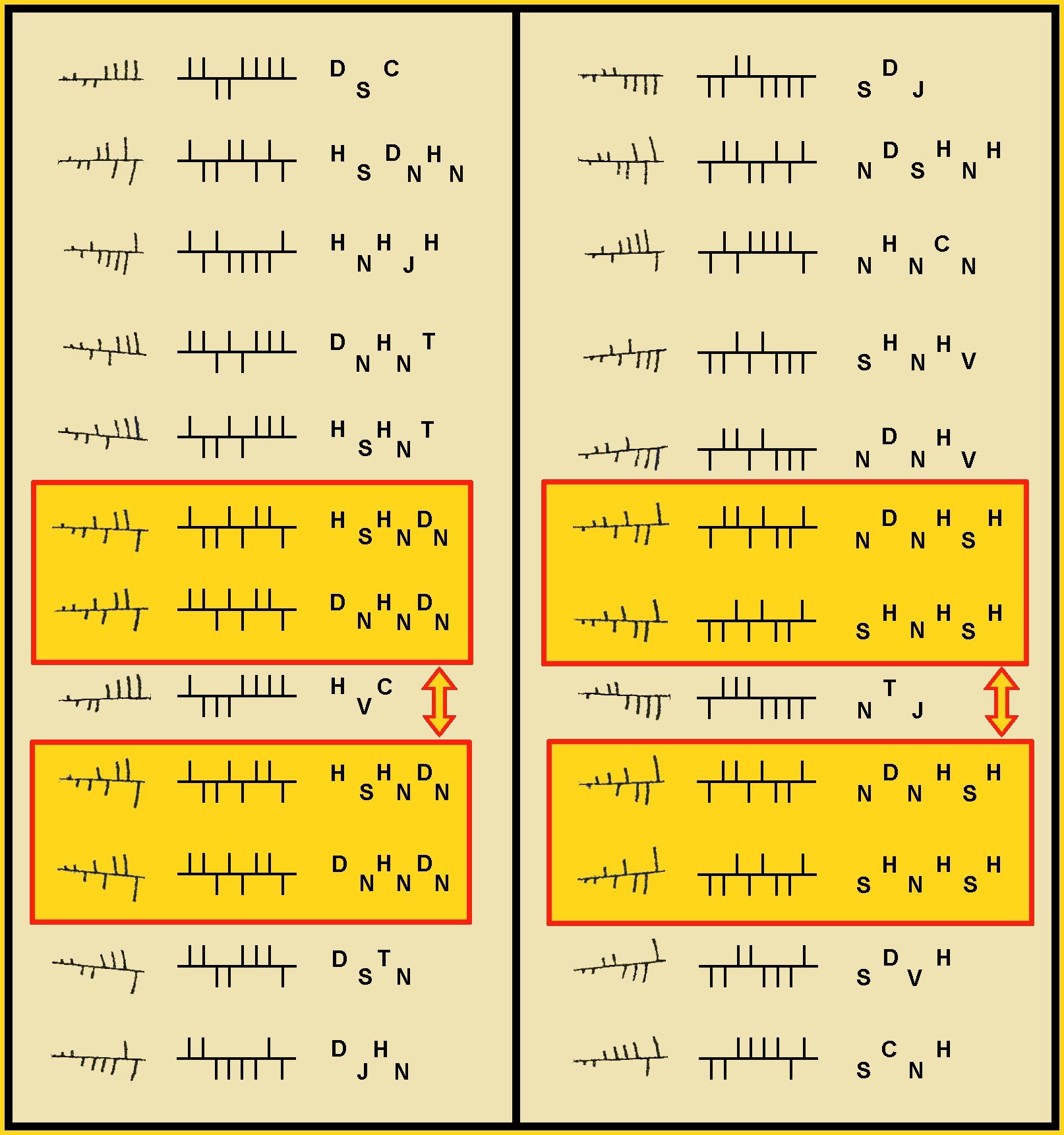
Two identical keysets at each column.
As we can see there are 2 sets of keys that are identical. I connected them with an arrow.
You almost wonder who could be so stupid to hang his or her sparekeys on the same bunch but this
off topic. And please, don't let this thought be food to dispute the formations authenticity!
The left and the right column represent mirror reading, so don't mistake, there are not really 4
sets but only 2 that are equal.
Now it comes; when we find these matching sets on the pictogram it can hit us…
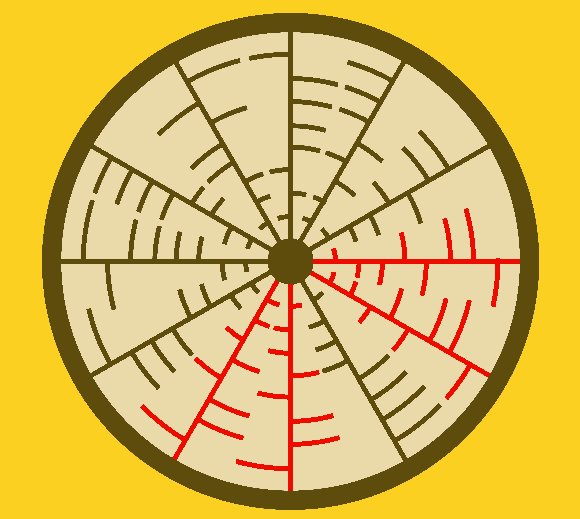
In case we would like to make the two to one, meaning to overlap the two sets, it becomes obvious
that the key in the middle attracts all our attention! It must be this particular key that forms
the answer to an important entrance…
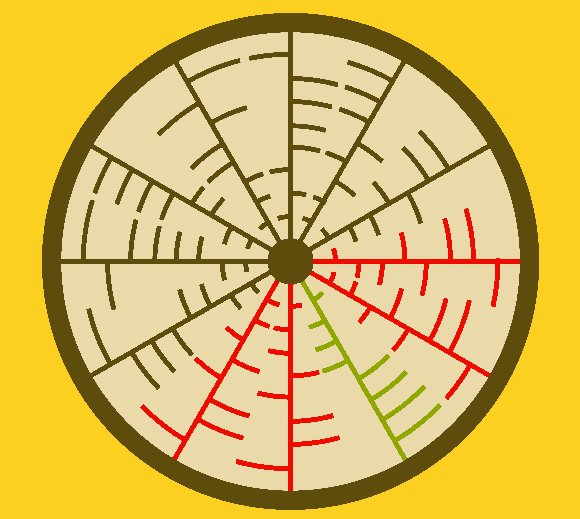
Is everybody with me? I'm hardly with myself…
So we have found THE key for the keyhole of Yarnbury Castle I presume. Now we only just have to
rebuild the castle to get in.
And what could it mean the keybunch formation is placed
pale in front of a windmill?
A lot of course, but one interesting idea I would like to come up with. That is the windmill as
a symbol for 'revolution'. In case we can go with that, let it be a peaceful one. According to
my humble opinion, no other revolution than a peaceful one should be named 'a real revolution'.
Thought we've had more than enough bloodshedding and repression by now.
This idea of 'revolution' leads me to the main thought that can be derived from the Yarnbury
Castle keyhole, namely 'suspicion'. The mental state that usually harms so much and that we can
only get rid off by observing it within our selves. After that, it is possible to replace it by
our own free will. Although I reported this at
CropCircleConnector.com at the Yarnbury Castle
formation as a comment, I better transpose that short explanation to overhere.
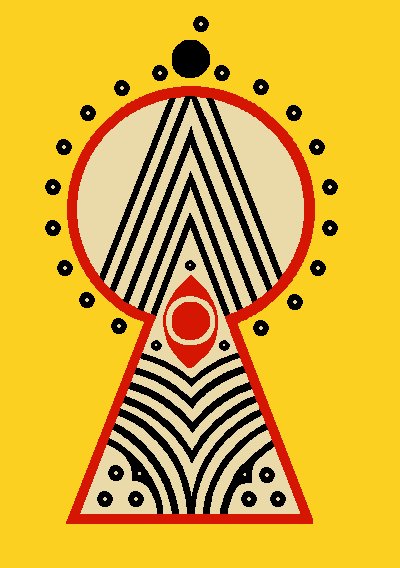
The essential idea marked with red.
It occurs to me that most essential to the design of the Yarnbury formation is an eye peeping
through a key hole. It can only mean "suspicion". From such a terrible mental
condition/position its quite impossible to oversee a wider perspective. Mistrust means
not seeing clearly. It usually leads to obstruction, conflict and other difficulties in life.
I can imagine the confrontation with this theme will help to mirror our selves. In other words,
to see if there's (still) mistrust within our selves that could be the cause of any trouble.
Who ever made this formation, hoaxers or not, I appreciate their work a lot.
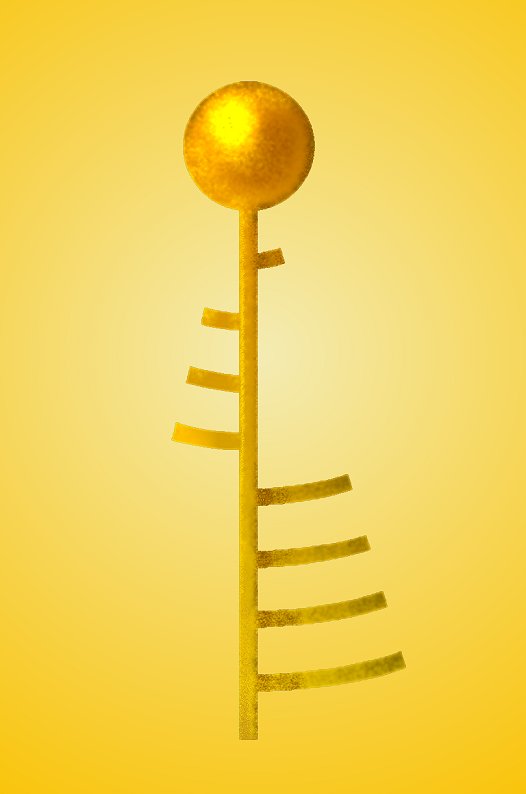
Quite funny about this situation is that now that we have found the key, we can put it in the
keyhole. Will suspicion (as an entity) still be able to spy through the hole? Or will it no longer
exist while it is transformed to understanding becouse of selfconfrontation?
Conclusion: Let the formation encourage us to drop our suspicion. It would surely mean a
psychological revolution! Let's experience how powerful that is!
But wait a minute. All this may sound like music to our ears, but have we taken a closer look to our
golden key? I mean, why exactly does it have its sideways the way it does? In a very simple way we
count 1 branche on the left (always start from the center, it’s one of the main rules in mental yoga), than 3
on the right and next 4 branches on the left. This gives us 134 as a clue.
What to do with 134? Let's go back to Yarnbury Castle. I have explained what I believe is the essence
of the keyhole, namely 'suspicion'. Suspicion as a susceptible psychological condition waiting for
the key to get transformed. Somehow, with all of the details the keyhole has, I find it hard to
come up with a convincing 134 match.
But what about that second formation around the corner in the same field?
It's just around the
corner, so simple and well. Could this be the keyhole for our simple key? Watch the following
picture and it will help you to get there.
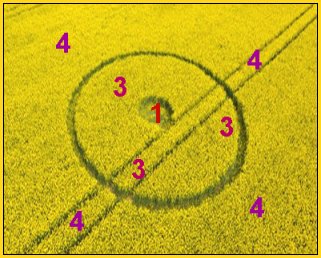
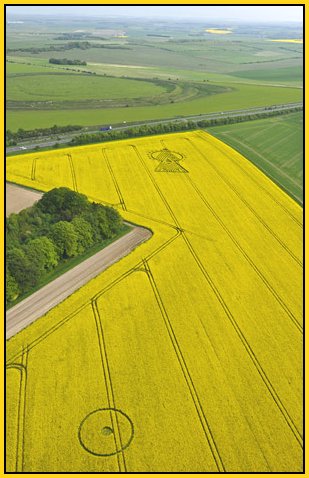
Left; A simple design... © photo: Steve Alexander/Randell
Right; ...just around the corner.
© photo: Steve Alexander
In case you don't understand what you are looking at: number 1 represents the flattened canola.
Except that it divides the field in separate sections it also binds them to one whole unified field. It can
lead us to all the different points of view that are available. The numbers 3 represent the maximum
of 3 sections inside the circle. Numbers 4 explain there are four differend sections connected
on the outside of the circle...
At this stage I can't figure out anymore if we are dealing with intelligence or just ordinairy simplicity?
What I do know is that the result pleases me a lot. Especially, now that the circumference of
a circle is approached from both directions, it might be not so stupid to remain a little bit longer
at the phenomenon 'circumference of a circle'.
Wasn't there something like a formula that could help us to measure the size of any circumference of
a circle? Ofcourse! We use therefor the magic number 'pi'! And how did that number look like?
Like this: 3,141592653589793238462643383279502884197169399375105820974944592307816406286208998
6280348253421170679821480865132823066470938446095505822317253594081284811174502841027019385211
0555964462294895493038196442881097566593344612847564823378678316527120190913 and somewhat longer.
Endlessly longer to be precise.
Do we prefer to keep it short than I propose to take a close watch on the first three numbers
of pi. It turns out we see '314' with a comma in between. Doesn't that make us think about the
key with number 134 atached to it? We only have to hold this key in a differend perspective to read
314 from it. And than it even occurs that the axis of the key is able to function as the comma!
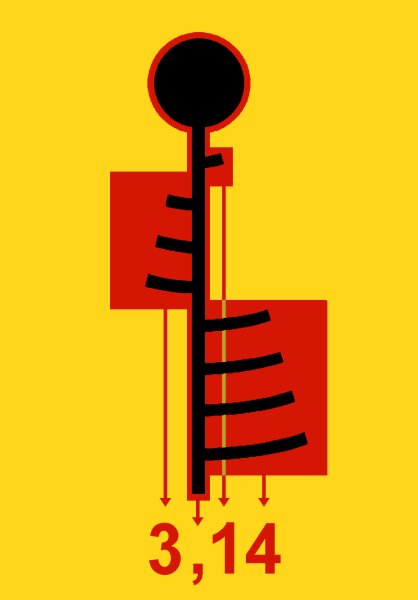
After all the information I derived from cropformations in general, I believe that in spite of
this marvelous outcome, there is still a lot more to be find in this Wilton Windmill formation.
To be honest I allready found more fascinating aspects that can be concidered as clues, but I
won't spoil all the fun of my colleague codecrackers, brainstormers, binairy mentalists and what
have you... I may be Dutch, but that doesn't mean I can't behave as a real gentleman!
Love you all.
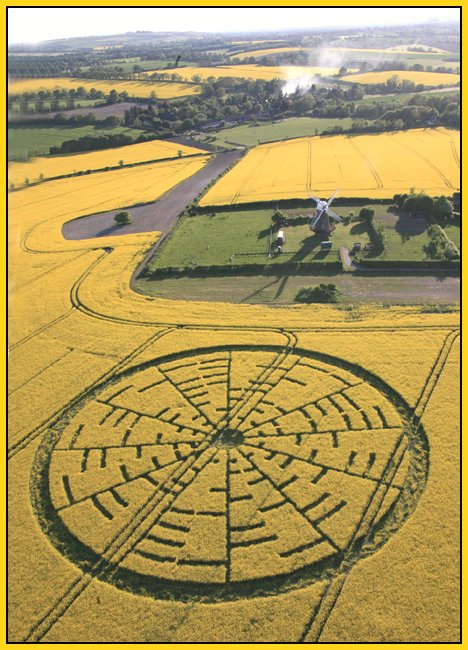
© photo: Lucy Pringle
|


































